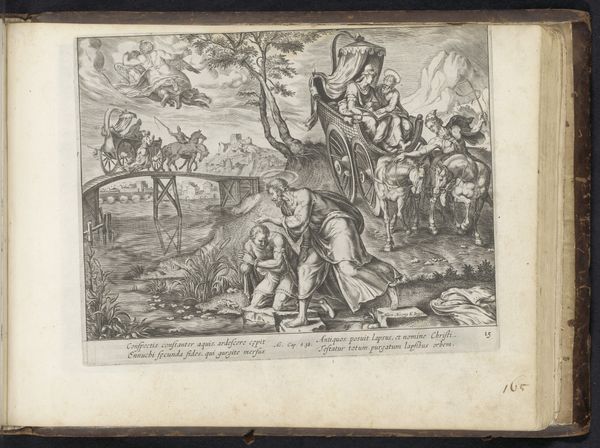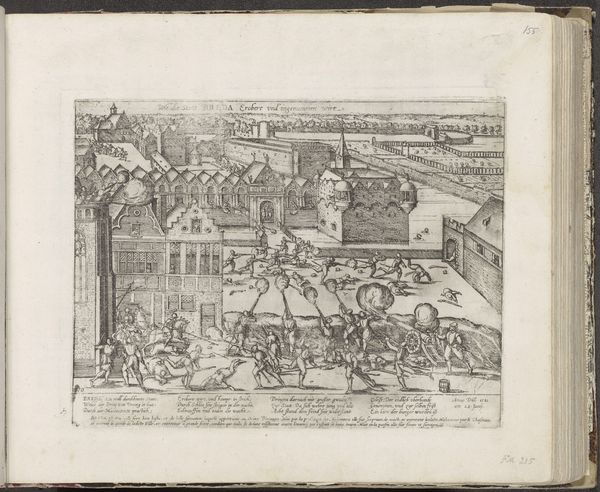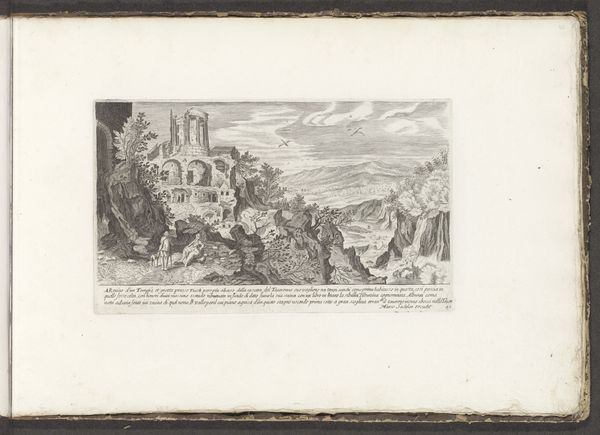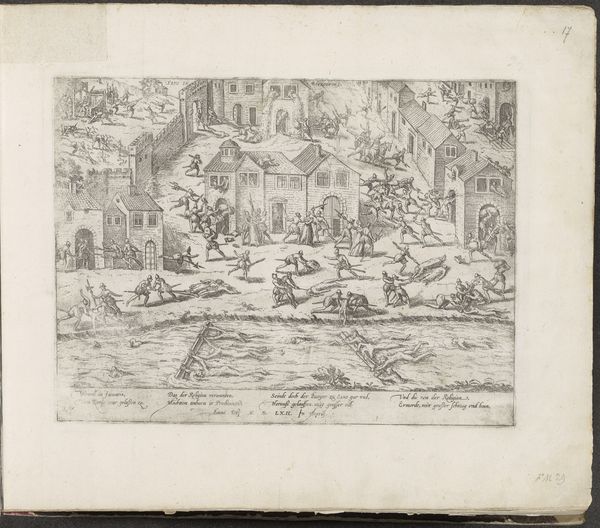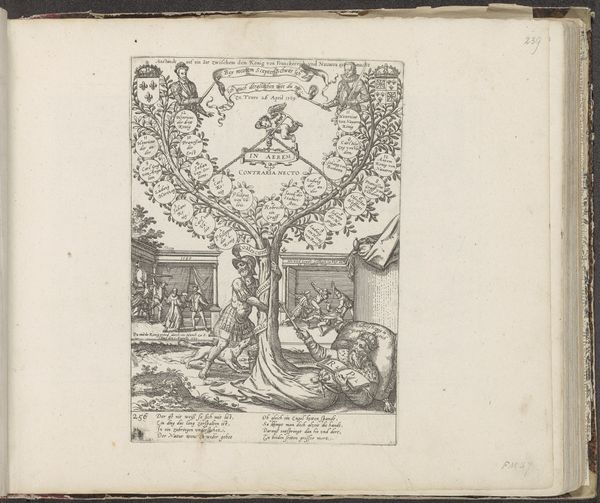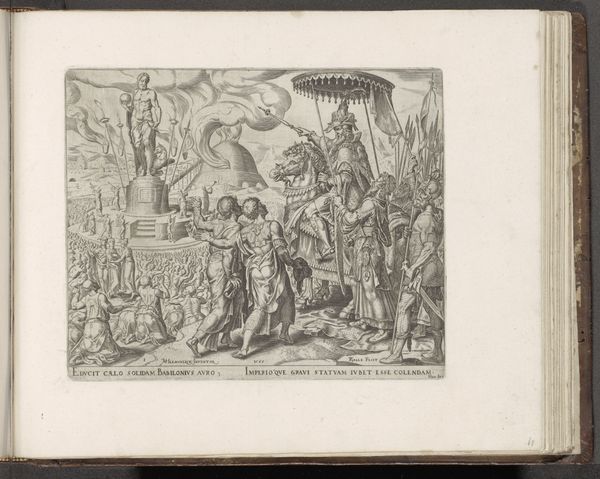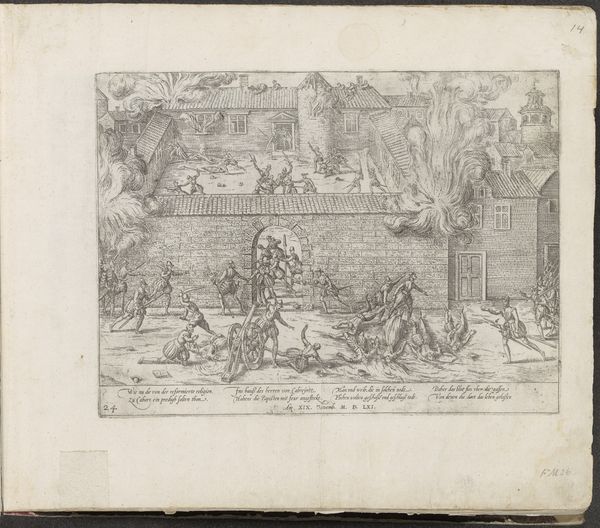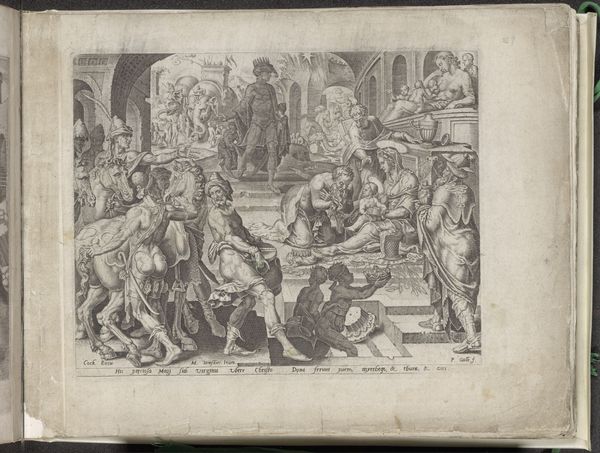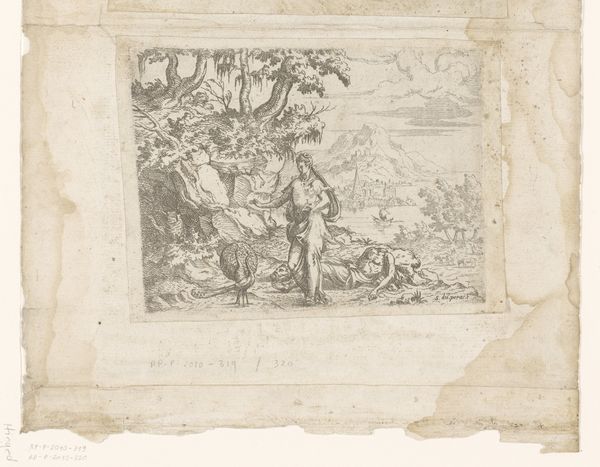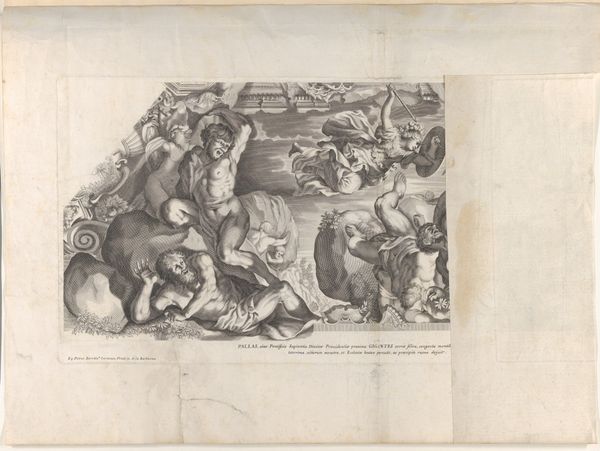
drawing, ink, pen, engraving
#
drawing
#
toned paper
#
baroque
#
pen drawing
#
pen sketch
#
sketch book
#
landscape
#
figuration
#
personal sketchbook
#
ink
#
ink drawing experimentation
#
pen-ink sketch
#
pen work
#
sketchbook drawing
#
pen
#
history-painting
#
sketchbook art
#
engraving
Dimensions: height 485 mm, width 440 mm
Copyright: Rijks Museum: Open Domain
Editor: This is "Slag bij Ramillies, 1706" by Jan van Vianen, created between 1706 and 1729. It's a pen and ink drawing, almost like an engraving, showing both a detailed map and a battle scene. I'm struck by how it combines the seemingly objective, strategic view of the map with the chaotic energy of the battle depicted below. What symbolic connections do you see between these two elements? Curator: The map is itself a symbol, a constructed representation of power and control over territory. Note how the formations aren't organic, but regimented, even geometric. How does this formal structuring of the battlefield affect our emotional reading of the violence depicted below? Does it heighten or diminish the human cost? Editor: That's fascinating. The order above contrasted with the chaos below definitely creates tension. It's like the map is trying to impose order onto something inherently disorderly. But the human figures in the lower register… Curator: Yes, their positioning, the dynamism rendered in the line work – look at how the bodies are strewn. Vianen invites us to contemplate not just the event, but how it imprints itself upon memory and ultimately, the symbolic order represented by the map. Notice how the heroic portraiture is itself offset and secondary within the composition, in relationship to both the "strategic" map and the “event” rendered below it. Who dictates the memory? And for whom is this memory created? Editor: So, the piece seems to question how we remember and represent conflict, blurring the lines between objective strategy and subjective experience, especially considering the hierarchy between these registers within the frame? Curator: Precisely. It invites us to consider the psychological weight of conflict, not just as a historical event but as a lasting imprint on cultural consciousness and how such a rendering could serve or obfuscate actual truths of the costs of such enterprises. Editor: That's given me a lot to think about regarding how seemingly objective depictions of historical events can be laden with symbolism and actively shape our understanding. Thanks for the insight! Curator: My pleasure. Seeing how these symbols interact truly enriches the viewing experience.
Comments
No comments
Be the first to comment and join the conversation on the ultimate creative platform.
